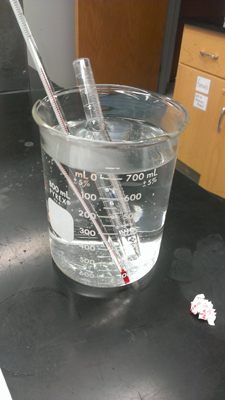|
Update of the CERSER TeraScan Cateloguing System TeraScan Image Processing Scripts [website]
Team Members: Derek Morris Jr., Jefferson Ridgeway, Tori Wilbon
Mentor: Jeff Wood
Keywords- GOES, TeraScan, ImageMagick, Macintosh OSX, MySQL, PHP, Remote Sensing
The Center of Excellence in Remote Sensing Education and Research (CERSER) on the campus of Elizabeth City State University is currently tasked with the responsibility of receiving remotely sensed data from orbiting National Oceanic and Atmospheric Administration (NOAA) Polar Operational Environmental Satellites (POES) and the Geostationary Operational Environmental Satellites (GOES). This data is collected by SeaSpace TeraScan systems installed in the CERSER labs in Dixon-Patterson Hall.
In 2005, the processing system underwent a major update due to a migration to a new operating system. A minor update was needed at this time to deal with a second operating system migration and display of the processed images on the CERSER web site. Since then, a second transfer to a new server was made in 2013. The cataloguing system went down at this time and was not repaired due to technical issues with the TeraScan system. The 2014 team corrected issues within the current server directory system and updated the data script to process images from the GOES-13 satellite received by the TeraScan system. Software and languages utilized for this task included ImageMagick, PHP, HTML, Dreamweaver, phpMyAdmin, and MySQL.
Along with this operating system update, a major script development was needed on the TeraScan processing equipment due to an upgrade in hardware. The ground station upgrades included a 3.7m X/L band, a 3.6m C band, and a 5.0m L band dishes, along with accompanying computing hardware. This new script processes both infrared and visible light images received from the GOES-13 satellite into the Tagged Image File (TIFF) Format.
Research Experience for Undergraduates at Elizabeth City State University in Elizabeth City, North Carolina
 Louis Stokes Alliance for Minority Participation Louis Stokes Alliance for Minority Participation
2013
Abstract
In Chemistry, there are four main gas laws that are discussed to understand how and why gas particles function. The four main gas laws that are present in the field of Chemistry are as follows: Charles's Law, Gay-Lussac's Law, Boyle's Law, and Avogadro's Law. Each of these laws has their own distinct way operating but is always in the world surrounding us. Two laws in particular Charles's Law and Avogadro's Law, are being focused on for this experiment. The purpose of this experiment is to prove Charles's Law and Avogadro's Law through a series of experiments
and of analyzing of the data. After proving the two gas laws and viewing the data, it is important to figure out how the two have a relationship with Hydrogen fuel cll vehicles and how it works. Future work includes implementing Hydrogen fuel cell vehicles to maintenance at Elizabeth City State University in order to reduce the carbon footprint (the amoun of Carbon dioxide that an individual or organizaztion emits into the atmosphere) of the school.
|
